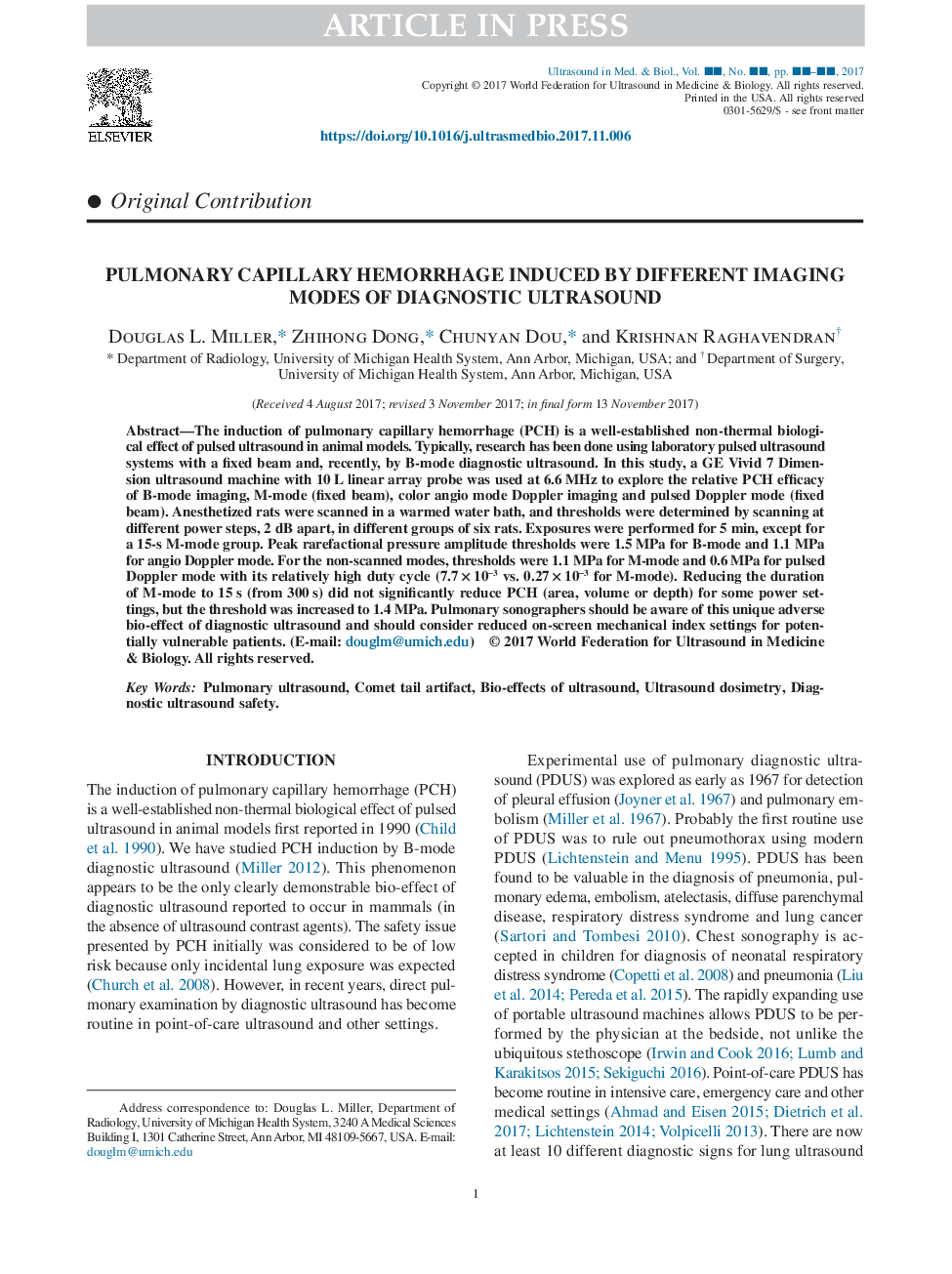| Article ID | Journal | Published Year | Pages | File Type |
|---|---|---|---|---|
| 8131167 | Ultrasound in Medicine & Biology | 2018 | 10 Pages |
Abstract
The induction of pulmonary capillary hemorrhage (PCH) is a well-established non-thermal biological effect of pulsed ultrasound in animal models. Typically, research has been done using laboratory pulsed ultrasound systems with a fixed beam and, recently, by B-mode diagnostic ultrasound. In this study, a GE Vivid 7 Dimension ultrasound machine with 10âL linear array probe was used at 6.6âMHz to explore the relative PCH efficacy of B-mode imaging, M-mode (fixed beam), color angio mode Doppler imaging and pulsed Doppler mode (fixed beam). Anesthetized rats were scanned in a warmed water bath, and thresholds were determined by scanning at different power steps, 2âdB apart, in different groups of six rats. Exposures were performed for 5âmin, except for a 15-s M-mode group. Peak rarefactional pressure amplitude thresholds were 1.5âMPa for B-mode and 1.1âMPa for angio Doppler mode. For the non-scanned modes, thresholds were 1.1âMPa for M-mode and 0.6âMPa for pulsed Doppler mode with its relatively high duty cycle (7.7âÃâ10â3 vs. 0.27âÃâ10â3 for M-mode). Reducing the duration of M-mode to 15âs (from 300âs) did not significantly reduce PCH (area, volume or depth) for some power settings, but the threshold was increased to 1.4âMPa. Pulmonary sonographers should be aware of this unique adverse bio-effect of diagnostic ultrasound and should consider reduced on-screen mechanical index settings for potentially vulnerable patients.
Related Topics
Physical Sciences and Engineering
Physics and Astronomy
Acoustics and Ultrasonics
Authors
Douglas L. Miller, Zhihong Dong, Chunyan Dou, Krishnan Raghavendran,
